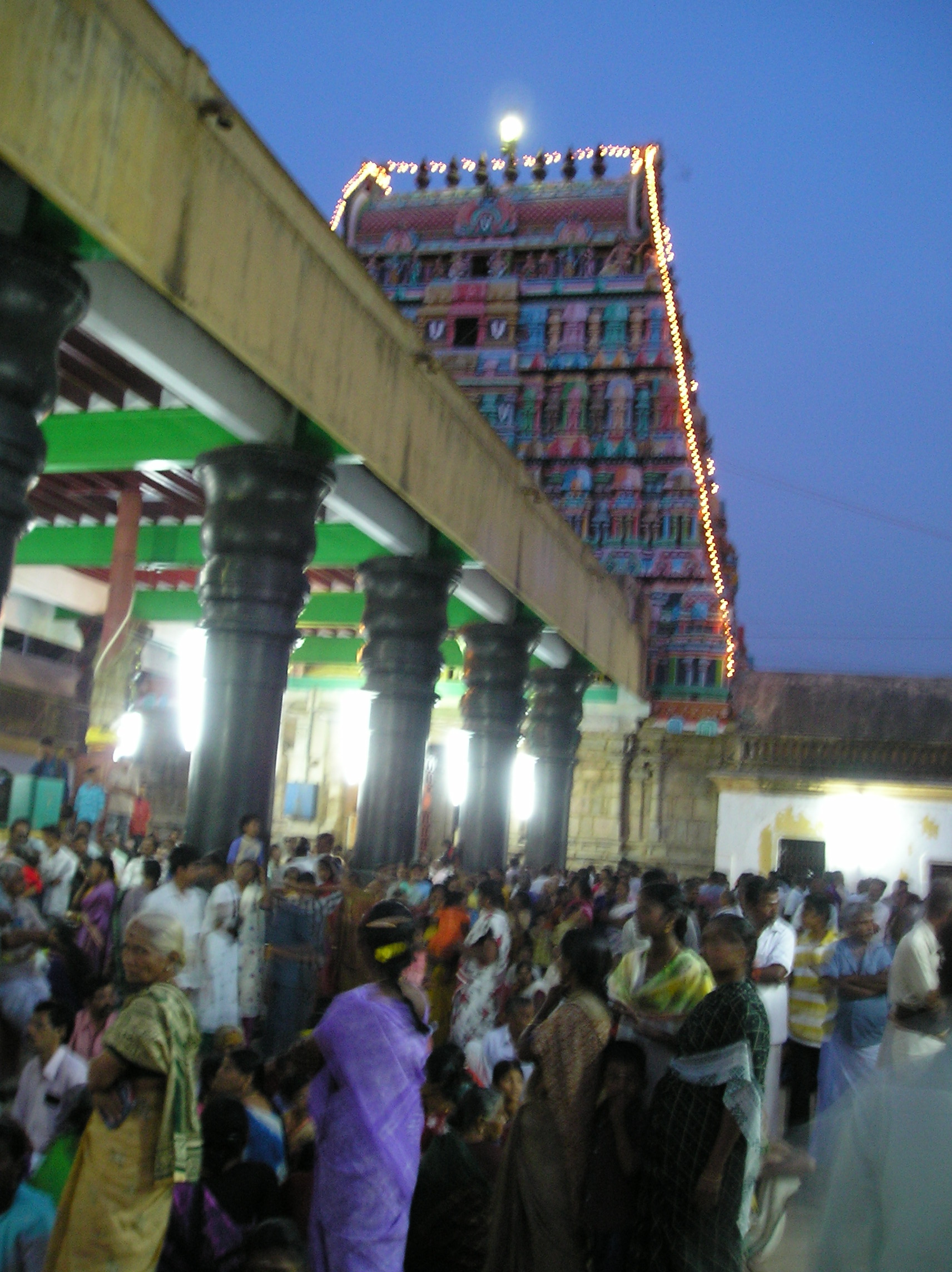The temple is believed to have been built by Kochengat Cholan of the late 3rd century AD, with later contributions from Medieval Cholas and Vijayanagar kings. A granite wall surrounds the temple, enclosing all its shrines, while it has a 5-tiered rajagopuram, the temple's gateway tower.
The temple is maintained and administered by the Hindu Religious and Endowment Board of the Government of Tamil Nadu.Srinivasa is believed to have appeared to sage Medhavi and married his daughter at this temple, witnessed by Brahma and devas.
Six daily rituals and four yearly festivals are held at the temple, of which the Brahmotsavam, celebrated during the Tamil month of Margazhi.The very special Garuda seva Utsavam is conducted twice a year. One is during Margazhi month and another during Panguni month.
The Narayur Nambi Sannadhi was once called as "Mani Mada kovil". The Chola King Koshenkannan rendered the money for Temple works. There after Sadavarma sundara pandiyan took over the work and donated lands to the temple. Then Ragunatha naicken of Thanjore constructed a Mandapam for Naachiyar.
Moolavar : Thirunarayur Nambi
Thayaar : Vanjulavalli Naachiyar
Pushkarani : Mani mukthi Nadhi Theertham
Vimanam : Srinivasa Vimaanam
Nachiar Kovil or Thirunarayur Nambi Temple in Thirunarayur, a village in the outskirts of Kumbakonam in the South Indian state of Tamil Nadu, is dedicated to the Hindu god Vishnu. Constructed in the Dravidian style of architecture, the temple is glorified in the Divya Prabandha, the early medieval Tamil canon of the Azhwar saints from the 6th to 9th centuries AD.
It is one of the 108 Divyadesam dedicated to Vishnu, who is worshipped as Srinivasa Perumal and his consort Lakshmi as Nachiyar. The temple is the place where god Vishnu is believed to have initiatedPancha Samskara (religious initiation) to Thirmangai Azhwar. The temple follows Thenkalai mode of worship.
Once upon a time there lived a saint named Medhavi here in Nachiyar Kovil. He wanted Mahalakshmi to be his daughter so he pleaded Mahavishnu and on an auspicious day under the tree called "Vanjula Maram", he found a very beautiful girl child. He named her "Vanjulavalli" after the tree from where he found her.
Here Lord Vishnu stands in a begging posture seeking Varulambika's hand from saint Medhavi in the Moolavar Sannadhi. In accordance to the saint's wish, Thaayar stands a step ahead to perumal.Shankarshnan, Prathyumnan, Anirudhan and purushothaman too bless us in the Moolavar sannathi by standing a step back to the Narayur Nambi.
Here Stone idol of the bird Garuda, Stands as the Vahanam or Vehicle to Narayur Nambi whereas Annam or the Swan is the Vahanam of the Godess Vagulambika.
Do:
- Do pray your Ishta Devata before pilgrimage to Temple.
- Do contact Temple Devasthanam information centre for enquiry, temple information and for Pooja details etc.
- Do reserve your travel and accommodation at Temple well in advance.
- Do bath and wear clean clothes before you enter the temple.
- Do concentrate on God and Goddess inside the temple.
- Do maintain silence and recite your Istamantram to yourself inside the temple.
- Do observe ancient custom and traditions while in Temple.
- Do respect religious sentiments at Temple.
- Do deposit your offerings in the hundi only.
Don't s:
- Do not come to Temple for any purpose other than worshipping of God and Goddess.
- Do not smoke at Temple.Do not consume alcoholic drinks at Temple.
- Do not eat non-vegetarian food in the Kshetram.
- Do not approach mediators for quick Darshanam. It may cause inconvenient to others.
- Do not carry any weapon inside the temple.
- Do not wear any head guards like helmets, caps, turbans and hats inside the temple premises.
- Do not perform Sastanga Pranama inside the Sanctum Sanctorum.
- Do not take much time while performing Sparsa Darshanam to God in Garbhagriha.
- Do not buy spurious prasadams from street vendors.
- Do not encourage beggars at Temple.
- Do not spit or create nuisance in the premises of the temple.
